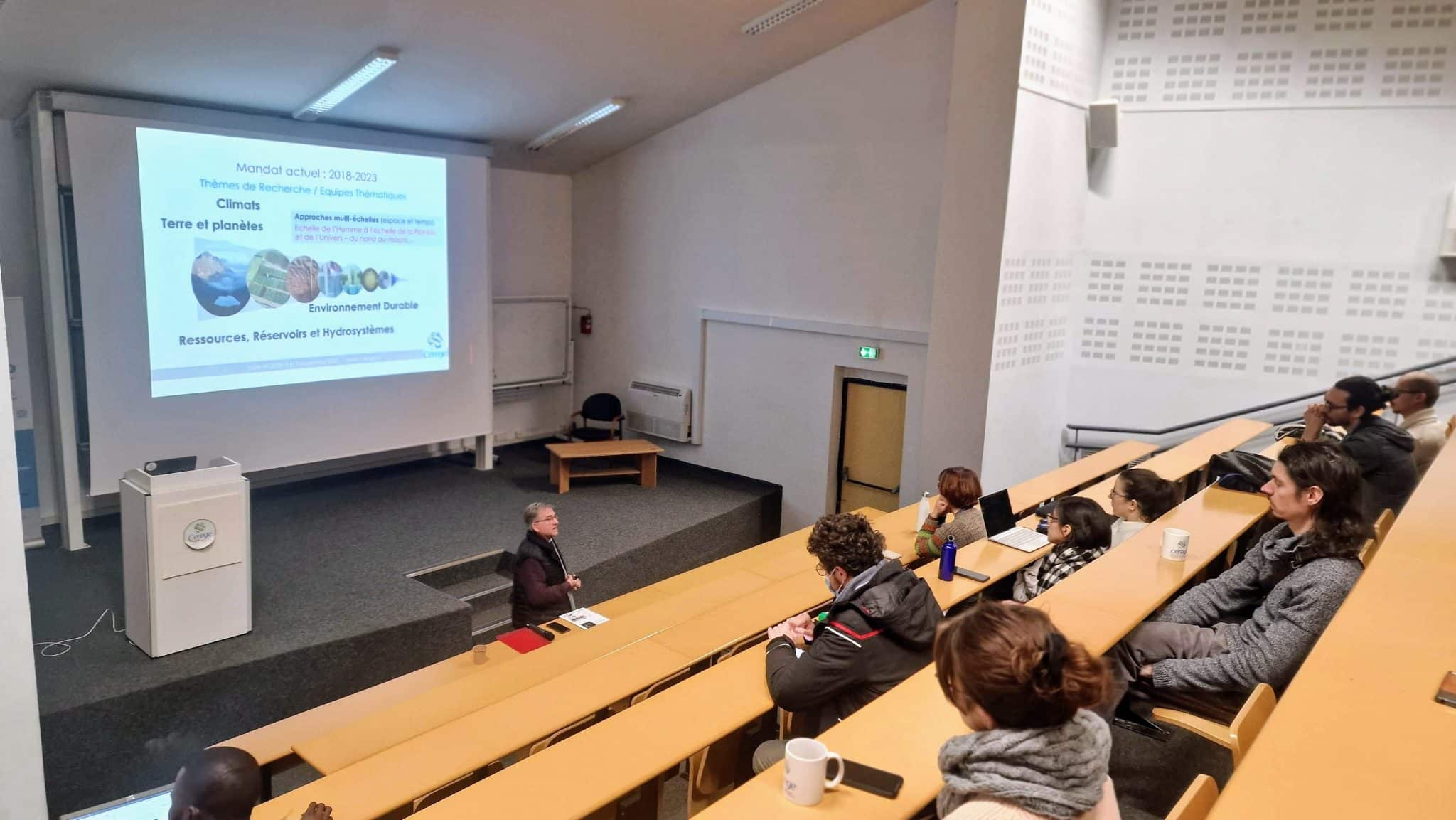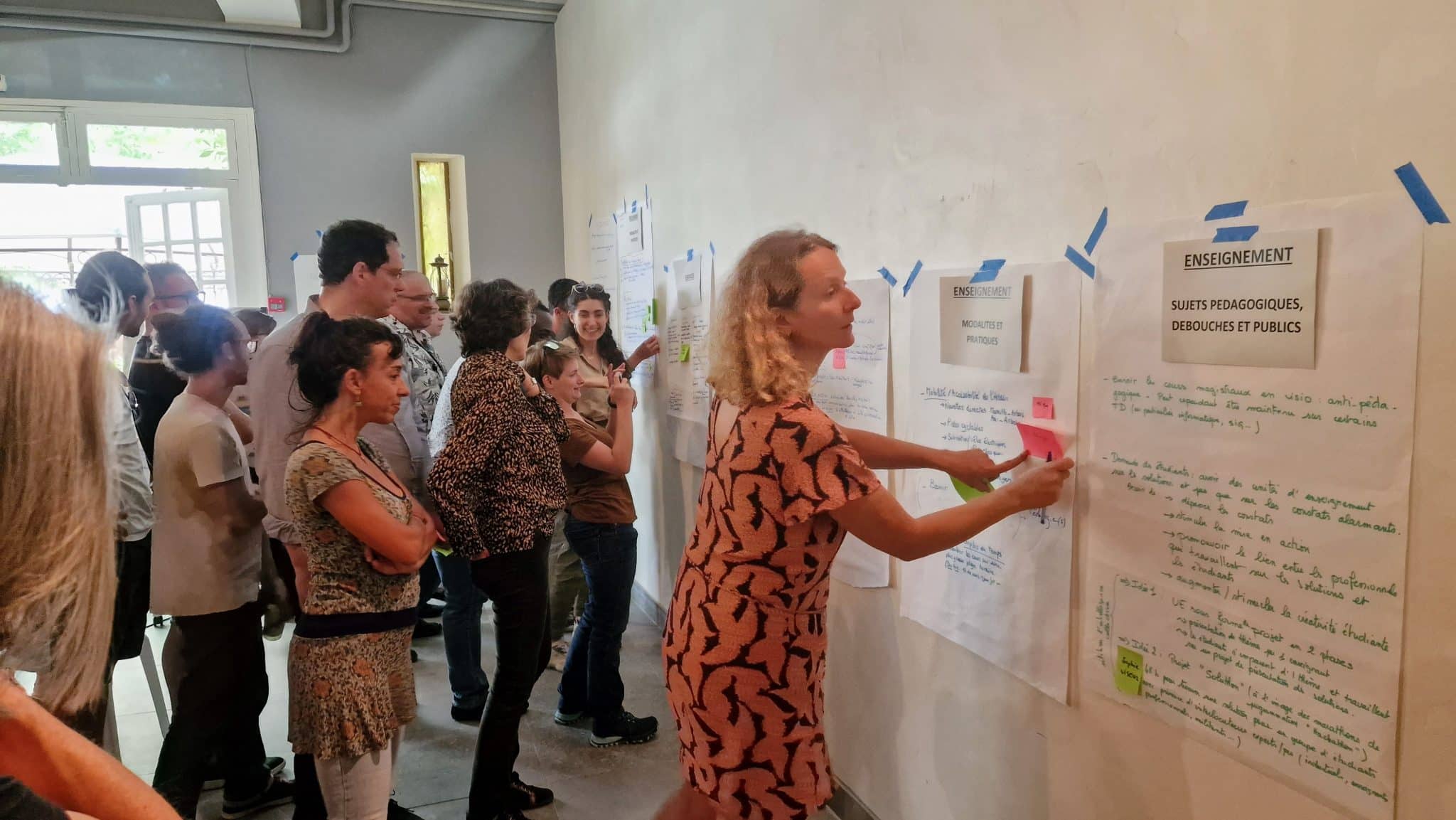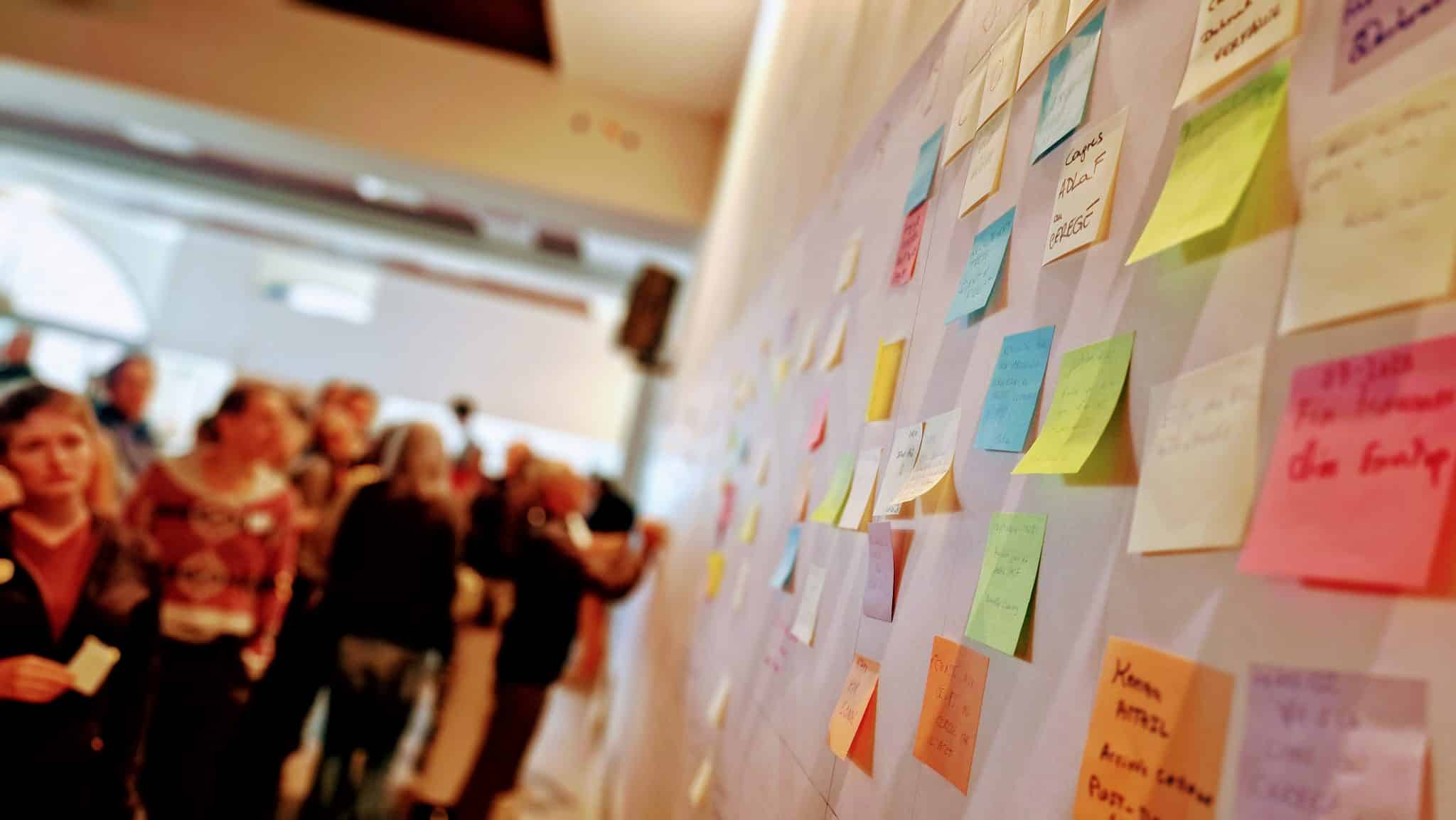Our organisation
CEREGE is structured around decision-making and executive bodies, the Management Committee and the Strategic Orientation Council (COS), as well as proposal and consultation bodies: the Laboratory Council, the Training-Research Commission and the Personnel Commission.
The executive committee which took its place on 1 January 2024, is made up of 6 members with complementary missions:
. Lucilla BenedettiPhD CNRS, Director
. Sandrine Magnetto, IR CNRS, Administrative Director
. Mélanie Auffan, DR CNRS, Deputy Director
. Laurence Vidal, Pr AMU, Deputy Director.
. Daniel BorschneckIR CNRS, Technical Director CEREGE Arbois
. Philippe Léonide, MCF AMU, Technical Director CEREGE St Charles
CEREGE has four thematic teams (Climate, Sustainable Environment, Earth and Planets, Hydrosystem Resources and Carbonates) and a Research Support Service (SAR).
In addition, a number of units, committees, project managers and referents enable voluntary work to be carried out on subjects supported by the department: environmental transition, parity, collections, scientific culture, doctoral students, etc.

Governance
The laboratory's governance bodies, boards and committees...

Transversal functions
The involvement of certain CEREGE staff in missions, cells and committees that are essential to the quality of life in the unit (safety, equality, transition, referents, etc.).

Timeline
CEREGE highlights since its creation in 1996



